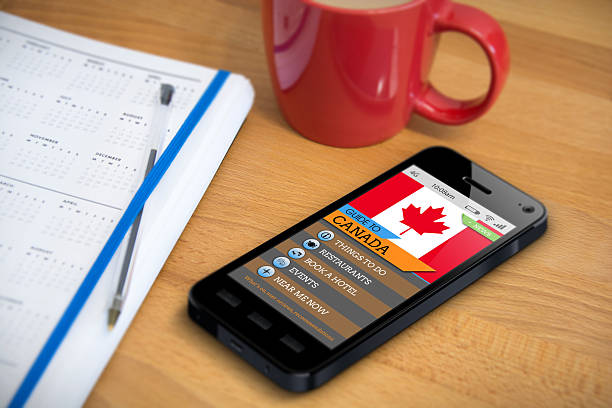Key Highlights
- Canada’s top three providers are Rogers, Bell, and Telus, known for wide coverage but higher costs.
- Flanker brands like Fido, Koodo, and Virgin offer more affordable plans with decent coverage.
- Newcomers can choose between prepaid and postpaid plans depending on credit history and budget.
- Most unlocked phones from abroad work in Canada, but double-check compatibility before switching.
Getting a Canadian phone number is one of the first essentials you’ll need when you arrive. Without it, applying for jobs, setting up banking, or even signing up for healthcare can feel impossible.
The challenge, however, is that Canadian phone plans are some of the most expensive in the world. Newcomers are often surprised by the high costs, the credit checks, and the different layers of providers. Choosing the wrong plan can leave you overpaying or stuck without enough data.
This guide breaks down everything you need to know as a newcomer: how the Canadian mobile system works, the difference between prepaid and postpaid, and the best plans from the Big 3 providers (Rogers, Bell, Telus) and their affordable flanker brands (Fido, Koodo, Virgin Plus). You’ll also see a comparison table with prices, data, and coverage so you can confidently pick what fits your budget and lifestyle.
Understanding Canada’s Mobile Market
The Canadian mobile market is controlled by three major players: Rogers, Bell, and Telus, collectively known as “The Big 3.”
These companies own the infrastructure, set industry pricing trends, and operate subsidiary brands to capture different market segments. Each Big 3 carrier owns flanker brands that offer similar network coverage at lower prices with fewer perks.
However, competition has grown thanks to flanker brands — smaller carriers owned by these big providers that use the same towers but offer cheaper plans.
- Rogers → owns Fido
- Telus → owns Koodo
- Bell → owns Virgin Plus
For newcomers, this setup is a win. You can choose premium coverage through the Big 3 or save money by starting with their flanker brands while still enjoying reliable service.
Prepaid vs Postpaid Plans: Which Should You Choose?
Prepaid Plans
Prepaid plans require payment before service activation. You pay upfront for a specific amount of data, minutes, and texts, then use services until your balance depletes. When your plan expires, you must top up to continue service. These plans don’t require credit checks but often cost more per gigabyte and may lack premium features.
How it works: You pay in advance, no bills or contracts.
Pros: No credit check, no surprise charges, flexible if you’re still settling.
Cons: Slightly higher per-GB cost, fewer premium perks.
Best for: Newcomers without Canadian credit history or those who want to control costs upfront.
Postpaid Plans
Postpaid plans bill you monthly after service usage. You receive services first, then pay at month-end. These plans typically offer better per-gigabyte pricing, premium network prioritization, and access to the latest phone financing deals. However, they require credit checks and may demand security deposits from newcomers without Canadian credit history.
How it works: Monthly billing after usage, often requires a credit check or deposit.
Pros: Bigger data packages, ability to finance phones, perks like international calling add-ons.
Cons: Requires credit history, may involve cancellation fees.
Best for: Long-term newcomers who want premium data and plan to stay in Canada for a while.
Note: As a newcomer, it is best advised to start with prepaid or flanker plans to avoid credit check stress. Once you’ve built credit (3–6 months), you can switch to a postpaid plan with better perks.

The Big 3 Providers (Premium Networks)
Canada’s major carriers offer the widest coverage and most advanced network features, but at premium prices that may challenge newcomer budgets.
Rogers
Rogers operates Canada’s largest wireless network, covering 97% of Canadians with LTE and expanding 5G coverage rapidly. Their network excels in rural areas and along major highways, which is crucial if you travel frequently or live outside major cities.
Current Rogers plans start around $47/month for 100GB+ data with bring-your-own-device pricing. Rogers occasionally offers newcomer promotions, including waived activation fees and international calling credits. Their network prioritizes subscribers during peak times, ensuring consistent speeds even in crowded areas.
Bell
Bell’s network particularly excels in urban areas and eastern Canada, offering strong 5G coverage in major cities. They’re known for responsive customer service and flexible plan customization options.
Bell’s current pricing mirrors Rogers, with plans typically ranging $55–80/month for substantial data allowances. They offer various international calling add-ons and have been expanding programs for newcomers, including special promotions during back-to-school seasons.
Telus
Telus built its reputation on strong western Canadian coverage and customer service excellence. They’ve invested heavily in rural network expansion and often lead in customer satisfaction surveys.
Current Telus pricing is comparable to competitors, with bring-your-own-device plans starting around $70–95/month for meaningful data allowances. Recent Telus offerings include a $60 / 150 GB Canada–US plan and 200 GB Canada–US-Mexico plans with $15/month price reductions.
Why choose the Big 3?
- Reliable in rural or remote areas.
- Great for heavy data users (streaming, gaming, remote work).
- Useful if you need bundled discounts with home internet.
Affordable Flanker Brands (Best for Newcomers)
Flanker brands operate on their parent companies’ networks but offer significantly lower prices by reducing customer service levels and premium features.
Fido (Rogers Network)
Fido provides Rogers-level coverage at lower prices. Current plans include $35 / 3 GB and $40 / 10 GB + 500 international texts. They also offer prepaid plans with no credit checks.
Best for newcomers who want Rogers coverage without the premium pricing.
Koodo (Telus Network)
Koodo offers prepaid and postpaid options, with current deals like 60 GB for $50/month. They feature “Shock-Free Data,” which prevents overage charges by slowing your speed when you hit your limit.
Best for budget-conscious newcomers who want Telus coverage and protection from surprise charges.
Virgin Plus (Bell Network)
Virgin Plus matches competitor pricing, with recent deals like 60 GB for $50. They emphasize digital-first service and offer perks through the Virgin Plus rewards program.
Best for newcomers who prefer Bell network coverage and simple online account management.
Regional and Alternative Carriers
Freedom Mobile
Freedom Mobile operates primarily in Toronto, Vancouver, Calgary, and surrounding areas, offering some of Canada’s lowest mobile prices. Their plans start around $39/month for 60 GB of data, providing excellent value for newcomers in their coverage areas.
However, Freedom’s network coverage is limited outside major urban centers, and their network speeds may not match the Big 3. They work best for newcomers who live and work in their coverage areas and rarely travel to rural locations.
Regional Players
SaskTel serves Saskatchewan with competitive pricing and strong local coverage. Videotron covers Quebec and Ottawa with aggressive pricing that often beats national carriers. Eastlink serves Atlantic Canada with competitive plans and strong customer service.
These regional carriers often provide better value than national carriers within their service areas but lack coverage for interprovincial travel. They’re ideal for newcomers settling permanently in specific provinces who don’t plan extensive travel across Canada.
Public Mobile (Telus Network)
Public Mobile offers ultra-cheap prepaid options, like 3 GB for $25, but support is only through online forums.
Best for newcomers with minimal data needs, technical comfort, and tight budgets who want Telus network coverage without paying premium prices.
Comparison Table: Best Mobile Plans for Newcomers in Canada
| Provider | Network | Plan Type | Monthly Price | Data | Key Features | Best For |
| Rogers | Rogers 5G | Postpaid | $47 | 100GB | Premium network priority, wide coverage | Heavy users, rural coverage needs |
| Bell | Bell 5G | Postpaid | $55 | Unlimited monthly usage | Strong urban coverage, customer service | Urban residents, support priority |
| Telus | Telus 5G | Postpaid | $70 | 100GB | Western coverage, customer satisfaction | Western Canada, rural needs |
| Fido | Rogers | Both | $35 | 3GB | Rogers network, competitive pricing | Budget-conscious, good coverage |
| Virgin Plus | Bell | Both | $50 | 60GB | Bell network, member rewards | Simplified plans, digital management |
| Koodo | Telus | Both | $50 | 60GB | Shock-free data, plan flexibility | Overage protection, budget focus |
| Freedom Mobile | Freedom | Both | $39 | 60GB | Lowest prices, Toronto/Vancouver focus | Major cities, ultra-budget |
| Public Mobile | Telus | Prepaid | $25 | 3GB | No-frills prepaid, community support | Students, minimal needs |

Tips for Picking the Right Plan
- Check coverage maps before committing. Not all providers serve rural areas equally.
- Look for promotions — bonus data and discounts for newcomers happen often.
- Bundle wisely. If you’re setting up home internet, bundle with mobile to save.
- Mind international calling. Many plans offer add-ons for countries where newcomers often call home.
- Review cancellation policies. Prepaid gives you freedom; postpaid may lock you in.
In Conclusion
For newcomers in Canada, the first phone plan should be about accessibility and value. If you want the widest coverage and don’t mind paying more, go with Rogers, Bell, or Telus. But if you’re just starting out, flanker brands like Fido, Koodo, and Virgin Plus give you the same reliable service for less money.
Start small, with a prepaid or mid-range plan. Once you’ve built your credit history and better understand your data needs, you can upgrade to a postpaid premium plan.
Frequently Asked Questions
1. Which mobile provider is best for newcomers in Canada?
It depends on your budget and where you live. Rogers, Bell, and Telus have the widest coverage across Canada, making them reliable if you travel or live outside major cities. Flanker brands like Fido, Koodo, and Virgin Plus are usually more affordable and still use the same networks, which makes them a popular choice for newcomers.
2. Do newcomers need a credit check to get a Canadian phone plan?
Credit checks are usually required for postpaid plans from the Big 3 providers. If you don’t have Canadian credit history yet, you can start with a prepaid plan or choose a flanker brand that offers options without credit checks. Some providers may also accept a refundable deposit instead.
3. Are prepaid or postpaid plans better for immigrants and international students?
Prepaid plans are often the easiest for newcomers because they don’t require a credit check, and you can cancel anytime without penalties. Postpaid plans may come with perks like phone financing or more data, but they usually require credit history. Many newcomers start with prepaid, then move to postpaid once they establish credit.
4. What is the cheapest phone plan in Canada right now?
As of 2025, flanker brands like Virgin Plus, Koodo, and Fido offer competitive deals, with some plans starting around $30–$36/month for 20GB of data. Regional providers like Freedom Mobile or Videotron may be even cheaper, but their coverage is limited to specific provinces or cities.
5. Can I use my phone from my home country in Canada (unlocked vs. locked devices)?
Yes, if your phone is unlocked and supports Canadian network bands, you can bring it and just buy a SIM card. Locked phones from your home country may not work, so it’s best to unlock your device before moving. If your phone isn’t compatible, you can buy or finance one through a Canadian provider.












